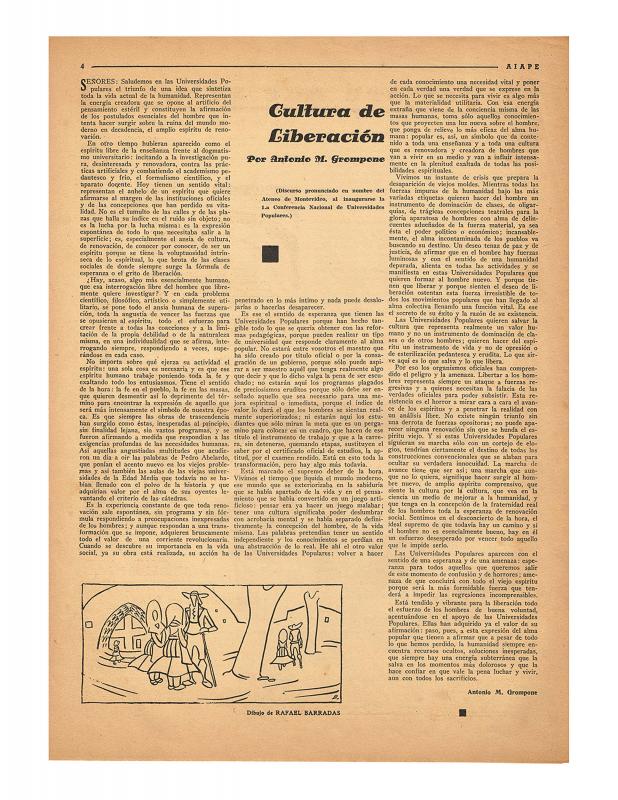The industrial sector was gaining ground in Uruguay in the first decades of the twentieth century. The system of technical instruction looked to the model of industrialized countries in adjusting to meet the new demands of productivity. In 1910, the Escuela de Artes y Oficios was founded on the basis of workshops that had been in operation since the nineteenth century, workshops more geared to providing social services, specifically to abandoned children, than to implementing an educational program. There are four distinct phases in the history of the Escuela de Artes y Oficios. The first (1910–15) entailed a system of workshops with a boarding school modality. During the second (1915–17), the workshops were expanded; only day students were admitted to a program organized according to a philosophical and pedagogical plan guided by Pedro Figari. In the third period (1917–34), the Consejo Superior de la Enseñanza Industrial was established; artistic manufacturing workshops were consigned as “female toils,” and emphasis was placed instead on teaching trades related to construction, industry, and chemistry. During the fourth phase (1934–42), industrial education was decentralized throughout Uruguay under the Dirección General de la Enseñanza Industrial, which Figari directed. That institution was therefore marked by his thinking on questions such as art and industry, criteria, vocation, autonomy, and Americanism. The Escuela de Artes y Oficios was focused on advocating industrial education as one of the foundations of public education in general. Art and industry were conceived as a single sphere of instruction, one both practical and functional, and creative and humanistic. That conception was in keeping with a philosophy that deemed “art and industry” essentially the same. It was believed that education should respect individuality and differences, as opposed to the uniformity upheld by classical academic education. The aim of this manufacturing model, unlike the industrial model, was to train skilled workers who were also artists. After Figari’s tenure, an executive board with representatives of government and industry took control of the institution. Painter Pedro Blanes Viale, who also taught at the Círculo de Bellas Artes, was named head of artistic instruction. Blanes Viale advocated modern aesthetic ideas in the applied arts, making fairly systematic use of the techniques and artistic criteria prevalent in the first European schools of arts and crafts. A number of the Uruguayan artists who taught at the Escuela de Industrias during this period had studied in Europe in the early twentieth century. Falcini maintains that despite differences in technique and other matters, European schools of arts and crafts all agreed on a basic idea: the need to observe the flora and fauna—a tenet of the Círculo de Bellas Artes from the start as well, owing to Carlos María Herrera. [For further reading, see the following texts in the ICAA digital archive: by Antonio M. Grompone “Cultura de liberación” (doc. no. 1226424); and (author unknown) “El Círculo de Bellas Artes y su acción docente 1905–1938” (doc. no. 1231073)].


